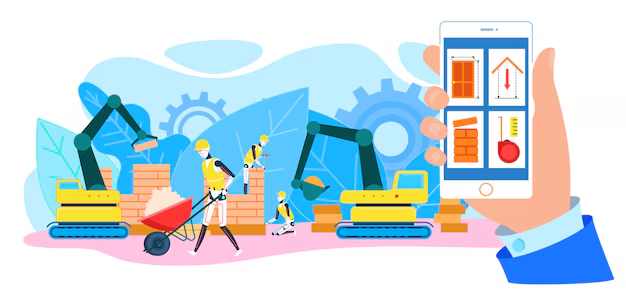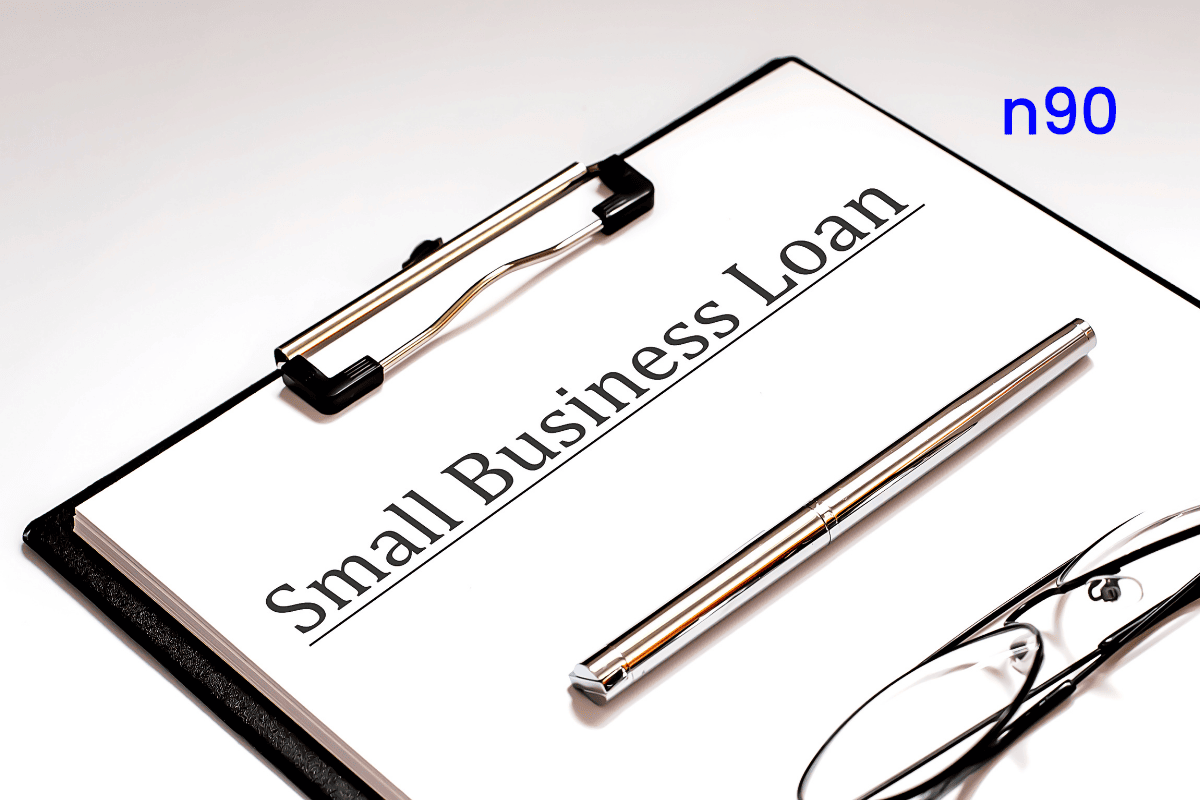Running a small business in the Philippines is like navigating a maze, where every turn presents new challenges and opportunities, and one of the critical hurdles Filipino entrepreneurs face is acquiring the necessary equipment to operate efficiently and competitively.
Whether you're looking to upgrade your technology, expand your operations, or simply replace outdated machinery, financing your equipment through small business equipment loans can be a game-changer.
However, with a myriad of financing options already available in the market, how do you choose the right one for your business? That is where our comprehensive small business equipment loans article will help you.
In this detailed article, we dive into the diverse world of small business equipment financing options and help Philippine businesses find the perfect fit to fuel their growth and drive their success.
What is Equipment Financing, And How Does it Work in The Philippines?

Equipment financing in the Philippines is a financial solution designed to help businesses acquire the necessary machinery, tools, and technology to operate and expand without bearing the full upfront cost.
This type of financing allows businesses to borrow money specifically for purchasing equipment, which serves as collateral for the loan.
In essence, equipment financing in the Philippines empowers businesses to enhance productivity, improve operational efficiency, and support growth without the burden of significant upfront investments.
Here's a closer look at how it works -
1. Loan or Lease: Businesses can choose between taking a loan to buy the equipment outright or leasing it for a specific period. Leasing can be more flexible, with options to purchase the equipment at the end of the lease term.
2. Flexible Terms: Financing institutions offer various repayment terms and interest rates tailored to the business's cash flow and financial health. Terms can range from a few months to several years, depending on the equipment's lifespan and value.
3. Collateral and Down Payment Requirements: The equipment itself usually serves as collateral, reducing the need for additional assets. Some lenders may require a down payment, which can be negotiated based on the borrower's creditworthiness and business history.
4. Accessible for SMEs: Small and medium-sized enterprises (SMEs) in the Philippines can significantly benefit from equipment financing. It allows them to stay competitive by upgrading their equipment without exhausting their working capital.
5. Potential Sources/Providers: Several banks, financial institutions, and specialized equipment financing companies offer these services in the Philippines. They cater to various industries, including manufacturing, construction, agriculture, and healthcare.
Also Read: Choosing the Right Business Loan for Your Company's Growth
Types of Small Business Equipment Loans Options Available For SMEs in The Philippines
For small and medium-sized enterprises (SMEs) in the Philippines, acquiring the right equipment is often pivotal to their success and competitiveness. However, the upfront costs of purchasing machinery, tools, or technology can pose significant financial challenges.
To lift this burden off themselves, SMEs have access to various equipment financing options tailored to their needs. These options not only help businesses acquire essential equipment but also preserve cash flow and facilitate growth.
Here, take a look at the diverse array of small business equipment loans solutions available for SMEs in the Philippines that will allow them to make the right financial decisions for their businesses and propel their businesses forward -
1. Term Loans
These loans provide a lump sum of money upfront that SMEs can use to purchase equipment. They come with fixed interest rates and repayment terms, typically ranging from one to five years.
Term loans are suitable for businesses looking to own the equipment outright.
2. Equipment Leasing
Leasing allows SMEs to use equipment without owning it outright. They pay regular lease payments for a specified period, after which they may have the option to purchase the equipment at its residual value.
Leasing is beneficial for businesses that prefer flexibility and want to upgrade equipment regularly.
3. Equipment Financing Agreements (EFA)
EFAs are similar to loans but specifically tailored for equipment purchases. The equipment serves as collateral, and SMEs repay the borrowed amount, plus interest, over a fixed term.
EFAs offer structured repayment plans and are suitable for businesses looking for ownership and tax benefits.
4. Asset-Based Financing
This type of financing uses the equipment itself as collateral. SMEs can secure loans based on the value of the equipment, allowing them to access funds while using the equipment as collateral.
Asset-based financing can be more accessible for businesses with limited credit history.
5. Vendor Financing
Some equipment suppliers offer financing options directly to SMEs. This arrangement simplifies the purchasing process, as SMEs can finance equipment through the vendor at competitive rates.
Vendor financing often includes bundled services and support, making it convenient for businesses to acquire equipment and services in one package.
Also Read: 6 Things You Need for Small Business Loan Requirements
Advantages and Disadvantages of The Different Types of Small Business Equipment Loans Options in The Philippines
Choosing the right equipment financing option is crucial for small businesses in the Philippines that are aiming to enhance their operational efficiency and sustain growth.
However, it is worth noting that each type of small business equipment loans option available comes with its own set of advantages and disadvantages and other impacting factors such as upfront costs, ownership flexibility, and long-term financial commitments.
So, in this section of the article, we will dive a bit deeper and take a look at the various benefits and drawbacks of the different small business equipment loans options to allow Filipino SMEs to support their operational success effectively -
1. Term Loans
- Advantages: Provide a lump sum for equipment purchase, fixed interest rates for predictable payments, and ownership rights upon repayment.
- Disadvantages: Requires upfront collateral, longer approval times, and potential for higher total costs due to interest.
2. Equipment Leasing
- Advantages: Lower initial costs, flexibility to upgrade equipment, and maintenance often included in lease agreements.
- Disadvantages: No ownership rights, higher total costs over time, and potential restrictions on equipment use.
3. Equipment Financing Agreements (EFA)
- Advantages: Structured repayment plans, ownership rights after full repayment, and tax benefits through depreciation.
- Disadvantages: Requires upfront collateral, potential for higher interest rates compared to term loans, and stringent qualification criteria.
4. Asset-Based Financing
- Advantages: Uses equipment itself as collateral, potentially easier approval for businesses with limited credit history, and flexibility in fund usage.
- Disadvantages: Risk of losing equipment if unable to repay, higher interest rates compared to traditional loans, and limited financing amounts based on equipment value.
5. Vendor Financing
- Advantages: Simplified purchasing process, bundled equipment and services, and competitive rates offered directly by suppliers.
- Disadvantages: Limited choice of equipment suppliers, the potential for higher overall costs due to bundled services, and reliance on vendor terms.
Also Read: Top Legit Loan Apps for Long-Term Borrowing with Low Interest
Immediate Funds for Immediate Needs! Experience hassle-free applications and fast approvals with N90’s Fast Financing Options. Apply today and take the next step in your business journey.
Important Factors to Consider Before Applying For Small Business Equipment Loans in The Philippines

Securing the right equipment can transform a small business in the Philippines, as it enhances its productivity and competitiveness; however, choosing the best equipment loan requires careful consideration of various factors.
From financial implications to operational needs, understanding these aspects ensures that SMEs make informed decisions that support their long-term growth.
So, in this section, we will be taking a look at the crucial factors every small business should evaluate before applying for equipment financing -
1. Financial Health and Creditworthiness
Before applying for an equipment loan, it's essential to assess your business's financial health and creditworthiness. Lenders will carefully examine your financial statements, credit score, and cash flow to determine your ability to repay the loan.
Ensure your financial records are up-to-date and accurately reflect your business's profitability and stability to present a compelling case to potential lenders.
A strong financial position and a good credit score can improve your chances of securing favorable terms, such as lower interest rates and longer repayment periods.
2. Loan Amount and Repayment Terms
Determine the exact amount of financing you need and evaluate the repayment terms offered by various lenders. Consider how the loan amount aligns with the cost of the equipment and any associated expenses, such as installation and maintenance.
Analyze the repayment schedule to ensure it fits within your business's cash flow without straining your finances. It's crucial to find a balance between manageable monthly payments and a repayment term that doesn't excessively extend your financial commitment.
3. Interest Rates and Fees
Compare the interest rates and fees associated with different equipment loan options. Interest rates can significantly impact the overall cost of the loan, affecting your long-term financial planning.
Additionally, be aware of any hidden fees, such as processing charges, prepayment penalties, and late payment fees.
A transparent understanding of the total cost of borrowing will help you select a loan that offers the best value for your business, avoiding unexpected financial burdens.
4. Type of Equipment and Its Lifespan
Consider the type of equipment you intend to finance and its expected lifespan. Choose financing options that match the longevity and utility of the equipment.
For example, short-term loans or leases may be more suitable for rapidly depreciating technology, while long-term loans might be better for durable machinery.
Aligning the financing term with the equipment's lifespan ensures you maximize the value of the investment without being left with payments for obsolete or non-functional equipment.
5. Lender Reputation and Support
Research the reputation and support services of potential lenders. Opt for lenders with a track record of reliability, transparency, and customer satisfaction.
Additionally, consider the level of support they offer throughout the loan term, including customer service, flexible payment options, and assistance in case of financial difficulties.
A reputable lender can provide peace of mind and a smoother borrowing experience, ensuring you receive the necessary support to navigate any challenges that may arise.
6. Potential Tax Benefits
Explore the potential tax benefits associated with equipment financing. In the Philippines, certain financing options might offer tax deductions on interest payments or depreciation benefits.
Consult with a tax advisor to understand how these benefits can impact your overall financial strategy.
Leveraging tax advantages can reduce the effective cost of financing, improving your business's profitability and cash flow management.
7. Impact on Cash Flow
Assess the impact of the loan on your business's cash flow. Ensure that the monthly loan payments align with your revenue projections and do not hinder your ability to cover other operational expenses.
A well-planned cash flow analysis helps you avoid liquidity issues and maintain financial stability while repaying the loan.
8. Long-term Business Goals
Consider how the equipment financing aligns with your long-term business goals. Evaluate whether the new equipment will drive growth, improve efficiency, or open new revenue streams.
Ensure that the financing decision supports your strategic objectives and contributes to the overall success of your business.
Aligning your financing choices with your long-term vision ensures that the investment in new equipment delivers meaningful and sustainable benefits for your business.
Also Read: Common Types of Bank Loans in the Philippines
Where to Get Small Business Equipment Loans in The Philippines
Acquiring the right kind of equipment is essential for SMEs that are aiming to scale operations and enhance productivity; however, finding the appropriate financing source can be a challenge.
Fortunately, the Philippines offers a variety of avenues where businesses can obtain equipment loans, each with its own set of benefits and requirements, from traditional banks to specialized financial institutions and government programs.
To help you in your efforts to secure the best small business equipment loans options in the Philippines, in this section, we’ll outline the key sources of small business equipment loans available in the Philippines.
Here, take a look at some of the best avenues -
1. Commercial Banks
Commercial banks are a traditional source of equipment financing for small businesses in the Philippines. They offer a range of loan products, including term loans and asset-based financing.
Banks such as BDO, BPI, and Metrobank provide competitive interest rates and flexible repayment terms.
However, securing a loan from a commercial bank typically requires a strong credit history, detailed financial records, and collateral.
2. Government Financial Institutions
Government financial institutions like the Development Bank of the Philippines (DBP) and the Land Bank of the Philippines offer specialized loan programs to support SMEs.
These programs often come with lower interest rates and favorable terms aimed at fostering business growth and economic development.
Additionally, the government may provide subsidies or guarantee programs to reduce the risk for lenders, making it easier for small businesses to obtain financing.
3. Microfinance Institutions
Microfinance institutions (MFIs) cater specifically to small businesses and entrepreneurs who may not qualify for traditional bank loans.
MFIs such as CARD Bank and ASA Philippines offer equipment loans with more lenient requirements and faster approval processes. These institutions focus on supporting micro and small enterprises, providing smaller loan amounts but with the advantage of more accessible and community-based services.
4. Non-Bank Financial Institutions
Non-bank financial institutions (NBFIs), such as financing companies and cooperatives, offer alternative equipment financing options.
Companies like First Circle and Acudeen provide tailored loan products that can be more flexible than those offered by traditional banks.
NBFIs often have faster processing times and may be more willing to work with businesses that have less established credit histories. They also offer innovative financing solutions like invoice financing and supply chain financing.
5. Vendor Financing Programs
Many equipment suppliers and manufacturers in the Philippines offer vendor financing programs.
These programs allow businesses to finance equipment purchases directly through the vendor, often with competitive interest rates and bundled maintenance services.
Vendor financing can streamline the purchasing process and may offer additional benefits, such as deferred payment plans or promotional financing rates.
6. Online Lending Platforms
Online lending platforms, such as Investree and FundKo, provide a modern and convenient way for SMEs to secure equipment loans.
These platforms connect borrowers with investors or lenders through an online marketplace, often offering faster approval and more flexible terms than traditional lenders.
Online platforms typically have straightforward application processes and can be a good option for businesses looking for quick access to funds.
7. Philippine Small Business Corporation (SB Corp)
The Philippine Small Business Corporation (SB Corp) offers various financing programs specifically designed for SMEs.
These include equipment loans aimed at helping businesses acquire the necessary tools and machinery for growth.
SB Corp's programs often feature low-interest rates and government-backed guarantees, making them an attractive option for small businesses looking for affordable financing solutions.
Also Read: Benefits and Disadvantages of Small Business Loans
Best Small Business Equipment Loans Options For Startups in The Philippines

For startups in the Philippines, finding the right equipment financing option is crucial, as it provides them with all the essential tools needed for productivity and growth without depleting precious capital reserves.
With a variety of financing solutions already available, choosing the best option can ensure that your startup scales efficiently and sustainably. However, choosing the right one is a little tricky as it must satisfy all the business's requirements without asking much in return.
So, in this section, we’ll highlight some of the top small business equipment loans options tailored specifically for startups in the Philippines.
Take a look at some of the best options right here -
1. Development Bank of the Philippines (DBP) Equipment Loan Program
The Development Bank of the Philippines offers a specialized Equipment Loan Program aimed at helping startups and SMEs acquire essential machinery and equipment.
This program provides competitive interest rates and flexible repayment terms, making it easier for new businesses to manage their cash flow.
2. Land Bank of the Philippines SME Loans
Land Bank of the Philippines offers various SME loan products, including equipment financing tailored to the needs of startups. These loans feature favorable terms such as low interest rates, extended repayment periods, and minimal collateral requirements.
Land Bank’s focus on supporting agricultural and rural enterprises can be particularly beneficial for startups in these sectors, offering tailored financial solutions to help them grow and thrive.
3. First Circle Business Financing
First Circle is a non-bank financial institution that provides flexible and fast financing solutions for startups and SMEs. Their equipment financing options are designed to be accessible and straightforward, with quick approval processes and minimal documentation requirements.
First Circle offers short to medium-term loans that can help startups acquire necessary equipment without the lengthy application procedures typical of traditional banks.
4. Investree Philippines
Investree is an online lending platform that connects startups with investors willing to fund their equipment needs. The platform offers a transparent and efficient process with competitive interest rates and flexible terms.
Startups can benefit from the speed and convenience of online applications, making it easier to secure financing without extensive paperwork.
5. BPI Family Ka-Negosyo Loan
The Bank of the Philippine Islands offers the Family Ka-Negosyo Loan, a tailored financing solution for SMEs and startups. This loan product provides flexible terms and competitive interest rates, with specific programs designed for equipment acquisition.
BPI’s extensive network and customer support can be advantageous for startups looking for a reliable banking partner to support their growth journey.
6. SB Corporation Equipment Financing
The Small Business Corporation provides various financing programs aimed at supporting startups and SMEs, including equipment financing options.
SB Corp offers low interest rates and government-backed guarantees, making it an attractive option for new businesses.
7. Vendor Financing Programs
Many equipment vendors in the Philippines offer financing programs directly to startups. These vendor financing options often come with competitive interest rates and flexible payment terms tailored to the specific equipment being purchased.
This type of financing can streamline the procurement process, as startups can secure both the equipment and financing from a single source.
Also Read: Non-Collateral Startup Business Loans in the Philippines
How to Choose Best Small Business Equipment Loans Provider in Philippines?
Identifying and selecting the right equipment loan provider is important for small businesses in the Philippines, as making the right choice can provide your business with the necessary financial support to acquire essential equipment that will not only enhance productivity but will also encourage further growth.
However, with various providers offering different terms and benefits, it can be challenging for small businesses, especially startups, to determine the best fit for your business needs.
So, to help you select the best financing option available, here are some important points to remember when choosing a small business equipment loans provider in the Philippines -
1. Interest Rates and Fees
Interest rates and fees directly impact the total cost of the loan, so it is a good habit to compare rates across different providers to find the most competitive option.
Moreover, be aware of additional hidden fees, such as processing charges, prepayment penalties, and late payment fees.
2. Repayment Terms
Evaluate the repayment terms offered by various lenders. Consider the length of the loan term and the flexibility of the repayment schedule, so ensure that the monthly payments fit within your business's cash flow without causing financial strain.
Flexible terms can help you manage your finances more effectively and avoid potential cash flow issues.
3. Loan Amount and Financing Limits
Different providers have varying limits on the amount they can finance, so ensure that the loan amount meets your equipment needs without leaving you short.
Additionally, some lenders may have minimum or maximum loan amounts, so choose a provider that can accommodate the scale of your financing requirements.
4. Collateral Requirements
Many equipment loans require collateral, which could be the equipment itself or other business assets, so carefully understand the collateral requirements of each provider and assess whether your business can meet these conditions or not.
Providers with less strict collateral requirements may be more accessible but could come with higher interest rates.
5. Approval Process and Speed
The approval process and speed can vary significantly between lenders. For startups needing quick access to funds, a provider with a fast and straightforward approval process is crucial.
Online lending platforms and non-bank financial institutions often offer quicker approvals compared to traditional banks.
6. Lender Reputation and Support
Research the reputation of potential lenders by looking for reviews and testimonials from other businesses about them to gauge their reliability and customer service quality.
A provider with a strong reputation and excellent customer support can offer peace of mind and assist you effectively throughout the loan term.
7. Additional Services and Benefits
Some lenders offer additional services and benefits, such as maintenance packages, flexible payment options, and business advisory services. These added perks can provide significant value and support to your business.
Consider what additional benefits each provider offers and how they align with your business needs.
8. Alignment with Business Goals
Ensure that the chosen loan provider aligns with your long-term business goals. The right financing partner should understand your industry and be committed to supporting your growth.
Consider whether the provider has experience working with businesses similar to yours and can offer tailored solutions that fit your strategic objectives.
Conclusion
Securing the right equipment financing is crucial for startups in the Philippines to acquire necessary assets without draining initial capital. Government-backed loans offer favorable terms but might have strict eligibility criteria.
On the other hand, Private lenders, such as Taycor Financial, Creditfy, and Credibly, provide more flexible options but often come with higher interest rates.
Hence, it is essential for startups to carefully evaluate their business needs, financial health, and loan terms before making a decision, by comparing multiple options and considering alternatives like leasing or supplier financing is also advisable.
By thoroughly assessing available choices, Filipino entrepreneurs can easily find the most suitable equipment financing solution available to fuel their business’s growth without breaking the bank or their precious savings.
Frequently Asked Questions (FAQs)
1. What is the best source of finance for a small business?
The best source of finance for a small business depends on various factors like business stage, industry, and risk profile.
Common options include bank loans, government grants, angel investors, venture capital, and bootstrapping. Ideally, a combination of these sources is used to balance risk and control.
2. Which is the cheapest source of financing?
Retained earnings are generally considered the cheapest source of financing for a small business in the Philippines. This typically involves the company reinvesting its profits back into the business.
However, as good as this option is, this option is limited by the amount of profit generated by the business. The more profit it earns, the more it is able to invest.
Other relatively cheaper options include government-backed loans and grants, which often come with lower interest rates or no repayment requirements.
3. What is the best source of funding for small businesses in the Philippines?
The best source of funding for a small business often depends on factors like business stage, industry, and risk tolerance. While there's no one-size-fits-all answer, common options include:
- Bootstrapping: Using personal savings or reinvesting profits.
- Loans: From banks, credit unions, or online lenders.
- Investors: Angel investors or venture capital for high-growth businesses.
- Government grants: For specific industries or projects.
- Crowdfunding: Raising capital from a large number of people.
4. What is the most common type of small business loan in the Philippines?
Term loans are the most common type of small business loan, as they provide a lump sum of money upfront, which is then repaid with interest over a fixed period.
Moreover, they are extremely versatile and can be used for various business purposes, such as purchasing equipment, expanding operations, or managing cash flow.
While other loan types exist, term loans remain a popular choice due to their straightforward structure and wide availability from banks, credit unions, and online lenders.













